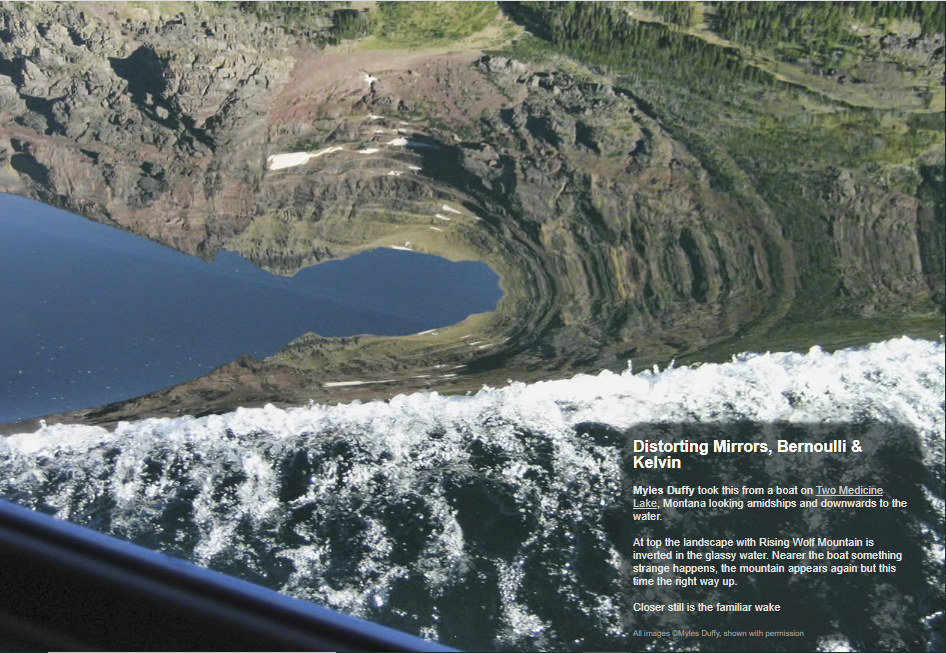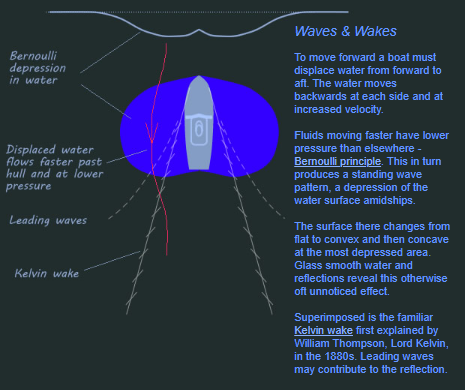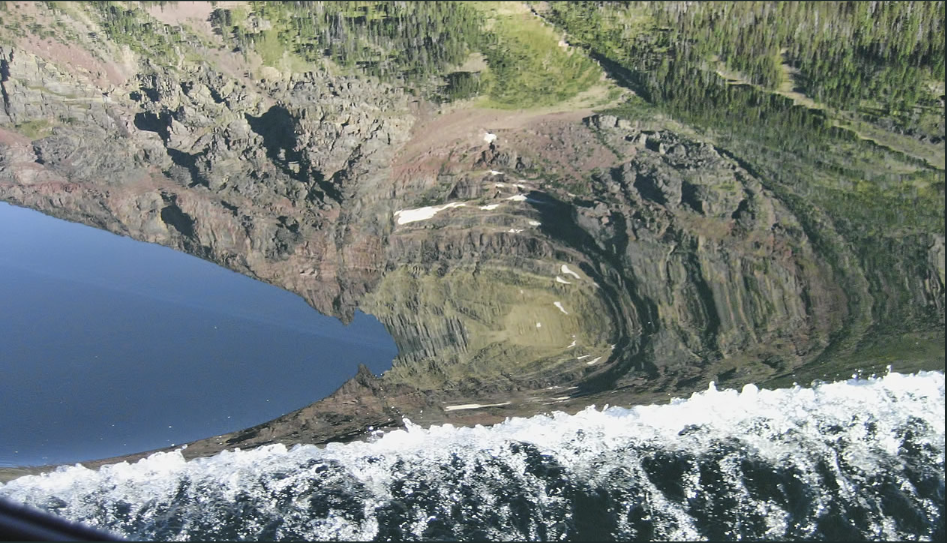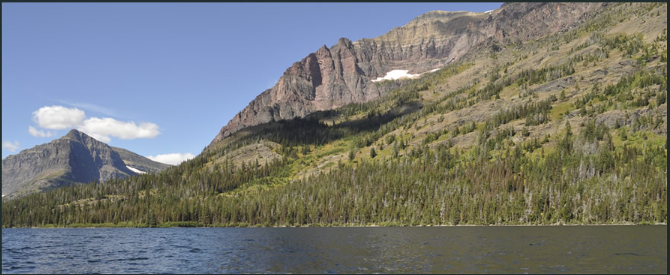Ship Wake Reflections - OPOD
Ship Wake Reflections: An Optical Phenomenon Explained
Have you ever noticed something strange happening when you look at a boat's wake on a calm body of water? The reflections in the water can play tricks on your eyes, creating an intriguing visual effect. In this article, we will explore the phenomenon of ship wake reflections and delve into the science behind it.
Waves and Wakes: The Science of Motion
To understand ship wake reflections, we need to first grasp the concept of waves and wakes. When a boat moves forward, it displaces water from the front to the back. As a result, the water at the sides of the boat moves backward at an increased velocity. This movement creates a lower pressure area according to Bernoulli's principle. The interaction between the faster-moving water and the slower-moving water produces a standing wave pattern, causing a depression in the water's surface amidships.
The Curvature of the Water's Surface
The depression in the water's surface is where the magic happens. As you observe the wake, you may notice that the surface changes from flat to convex and then concave at its most depressed point. These subtle changes in curvature are often overlooked but can be observed when the water is exceptionally smooth. When light reflects off these curved surfaces, it creates an optical illusion that alters our perception of the reflected image.
Reflections: Inversions and Erect Images
When light rays from a distant object strike the convex edge of the depressed water surface, they are reflected towards our eyes. Due to this reflection, we perceive an inverted image in the water. As we move closer to the wake, the surface becomes concave, causing the rays reaching our eyes to cross each other before reflection. This crossing of rays creates an inversion, similar to what we observe in mirages. Finally, at the actual reflection, a second inversion occurs, resulting in an erect image in the water.
The Kelvin Wake: Adding Complexity to the Reflections
If you look closely at the boat's wake, you may notice an additional pattern known as the Kelvin wake. The Kelvin wake was first explained by William Thompson, also known as Lord Kelvin, in the 1880s. This wake is created by the leading waves of the boat and can contribute to the overall reflection in the water. The interplay between the depression in the water's surface and the Kelvin wake adds complexity and visual interest to ship wake reflections.
Beyond Ship Wakes: Sky Pools and Other Reflections
Ship wake reflections are not limited to bodies of water alone. Similar optical phenomena can be observed in sky pools, where reflections in calm water create inverted and erect images. The principles behind these reflections remain the same, with the curvature of the water's surface playing a crucial role in distorting our perception of reality.
Conclusion
Ship wake reflections offer a captivating glimpse into the world of atmospheric optics. By understanding the science behind these phenomena, we can appreciate the intricate interplay between light, water, and our own perception. The next time you find yourself near a boat on a calm lake or ocean, take a moment to observe the mesmerizing reflections in the wake. You'll be amazed at the hidden beauty that lies beneath the surface.

Distorting Mirrors, Bernoulli & Kelvin
Myles Duffy took this from a boat on Two Medicine Lake, Montana looking amidships and downwards to the water.
At top the landscape with Rising Wolf Mountain is inverted in the glassy water. Nearer the boat something strange happens, the mountain appears again but this time the right way up.
Closer still is the familiar wake
All images ©Myles Duffy, shown with permission

Waves & Wakes
To move forward a boat must displace water from forward to aft. The water moves backwards at each side and at increased velocity.
Fluids moving faster have lower pressure than elsewhere - Bernoulli principle. This in turn produces a standing wave pattern, a depression of the water surface amidships.
The surface there changes from flat to convex and then concave at the most depressed area. Glass smooth water and reflections reveal this otherwise oft unnoticed effect.
Superimposed is the familiar Kelvin wake first explained by William Thompson, Lord Kelvin, in the 1880s. Leading waves may contribute to the reflection.

Reflections
Accurate computer ray tracings for a sinusoidal hollow are at right.
The topmost shows rays from the green arrow reflected off the convex edge of the depression towards the eye. The eye sees an inverted image in the water.
Closer in the surface becomes concave. Rays reaching the eye cross each other before reflection. Ray crossing, as in mirages, always creates an inversion. A second inversion occurs at the actual reflection finally giving an erect image in the water.
Even closer in the depression goes convex again. It would give another inverted reflection but that one is obscured by the boat's Kelvin wake.
Sky pools do this too.


Note: this article has been automatically converted from the old site and may not appear as intended. You can find the original article here.
Reference Atmospheric Optics
If you use any of the definitions, information, or data presented on Atmospheric Optics, please copy the link or reference below to properly credit us as the reference source. Thank you!
-
<a href="https://atoptics.co.uk/blog/ship-wake-reflections-opod/">Ship Wake Reflections - OPOD</a>
-
"Ship Wake Reflections - OPOD". Atmospheric Optics. Accessed on November 16, 2024. https://atoptics.co.uk/blog/ship-wake-reflections-opod/.
-
"Ship Wake Reflections - OPOD". Atmospheric Optics, https://atoptics.co.uk/blog/ship-wake-reflections-opod/. Accessed 16 November, 2024
-
Ship Wake Reflections - OPOD. Atmospheric Optics. Retrieved from https://atoptics.co.uk/blog/ship-wake-reflections-opod/.